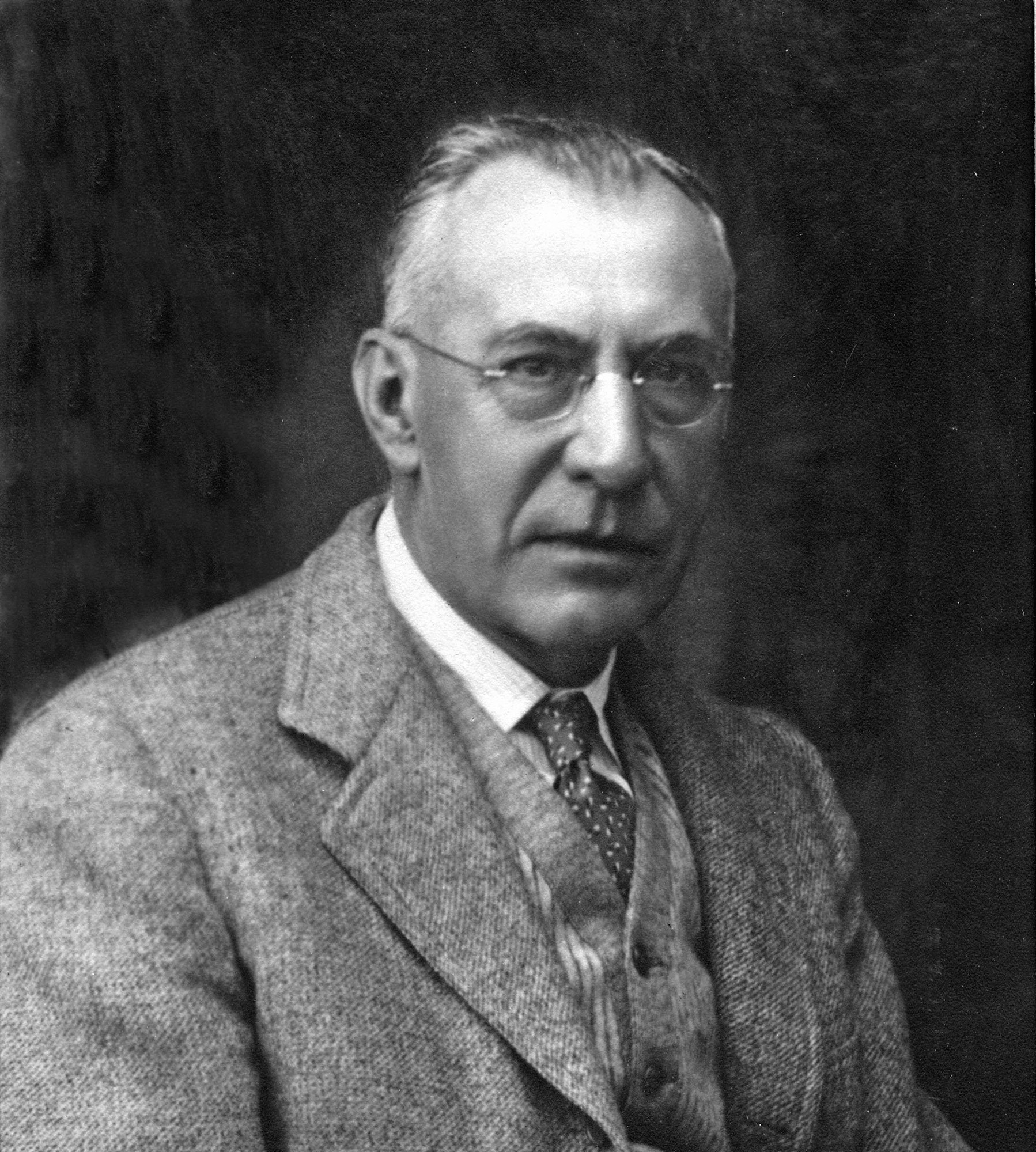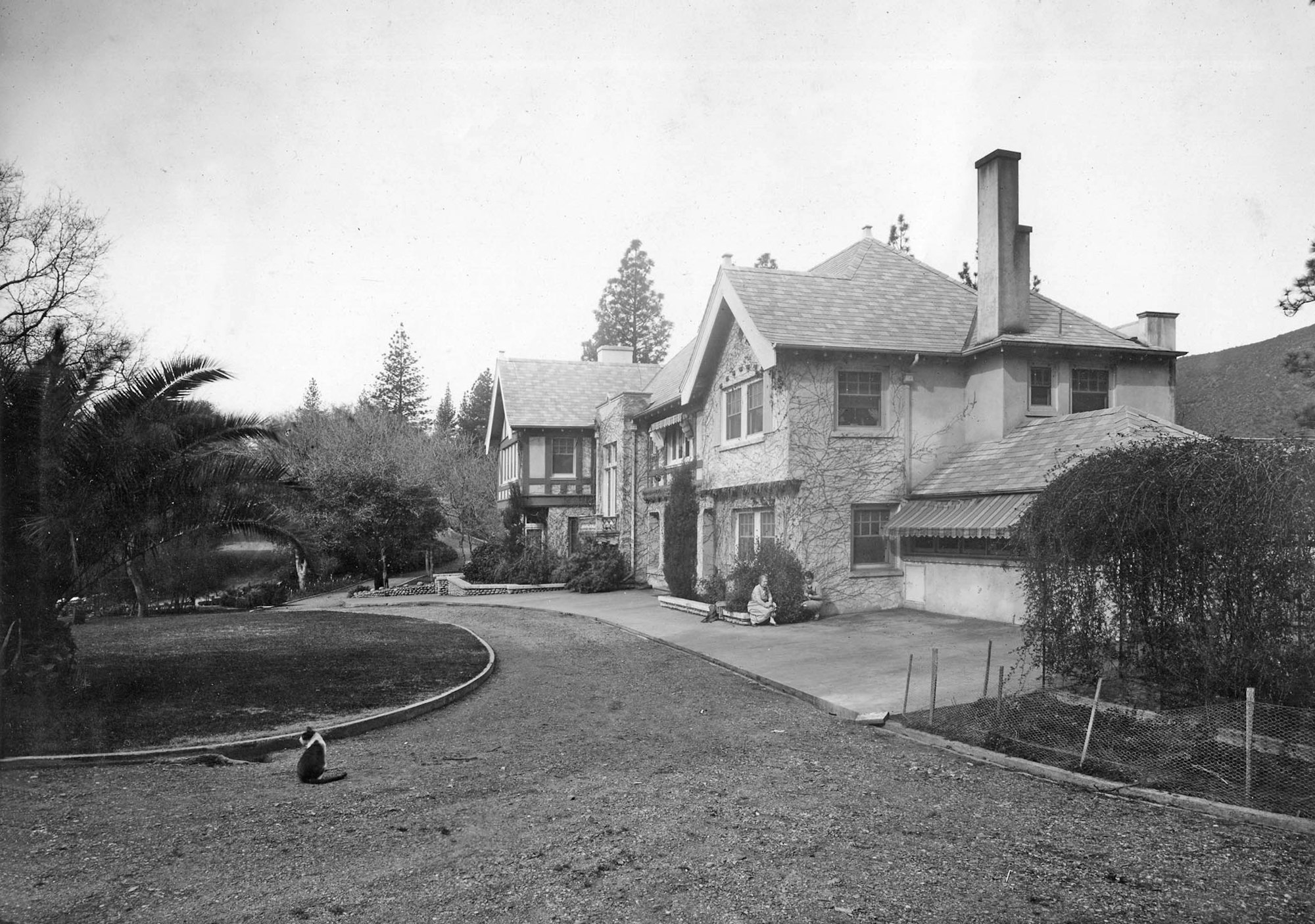Fricot City
The history of the area now known as Fricot City is inextricably tied to the tenure of Desiré Fricot, a native of France who was involved in mining and farming activities in Calaveras County from the 1890s until his death in 1940. His father, Jules Fricot, had been involved in mining enterprises in Grass Valley since the 1850s, and later in Sheep Ranch, owning part of the Chavanne Mine in that community with his friend Andre Chavanne.
Jules had married Jane Elizabeth Jenkins in Grass Valley, but the family returned to Paris shortly thereafter where Desiré Jules/Julius was born on April 4, 1868. Two years later, on May 4, Marie Emily Eleanore Fricot was born to the couple. Jules and his wife divorced and, in 1879, he came to Calaveritas to mine. The following year he was residing in Sheep Ranch with son Desiré, aged 12, and Desiré’s tutor, Joseph Lemaitre. Jules noted his occupation as “prospecting a mine,” evidently the Chavanne Mine that Chavanne and Fricot sold to George Hearst in 1882, and was incorporated into the Sheep Ranch Mine (U.S. Federal Census, 1880; Elliott 1885; Fricot File, Calaveras County Historical Society).
Jules then began purchasing several mining claims on San Antonio (Antone) Ridge, an area that “offered spectacular views, bountiful wildlife, and spacious living” (Eggleston 2006). Mines purchased in those early years included the Caruthers from T.K. Caruthers; Hansen Placer Mine, Hidden Treasure Placer Mine, portions of the Tornado and Young Tornado from Neils Hansen; and others from Peter Davis. Interestingly, some of these later resided in the Fricot residence or on the ridge.

Upon his death in Paris in 1889, he left his estate, valued at over $860,000, which included numerous properties in San Francisco as well as the Calaveras mining claims, to his son Desiré and daughter Marie, to be held in trust until their 25th birthdays (Jules Fricot Probate, Record Storage Box 3). By this time Desiré had returned to France, where he studied engineering in the future Sorbonne. He returned to California in 1894.
In May of 1895, Marie, by then married to George Berton and residing in San Francisco, deeded the claims on San Antone Ridge to her brother (Deed Book 28:360). On November 10, 1898, Desiré was married to Lillian Eichelroth, a native of Sonora, in San Francisco. The couple moved into their new large shingle style home on San Antone Ridge where Fricot operated his mining properties and farmed the land. By the early 1900s, he owned 11 quartz claims and two placer claims on the ridge, with improvements including a house, barn, office, sheds, and fence on the Albany Claim. The lands were valued at $2760, and the improvements at $200 (Calaveras County Tax Assessor’s Roll 1902:93).
Fricot continued to purchase more claims and by 1918 had constructed many improvements on the ranch, now called Fricot City. They included an assay office, sheds, pumphouse, three barns, four small cottages, a garage and fence on the Albany Claim (the house having burned the previous year), valued at $1500. Improvements on the other claims included a pumping plant, rockbreaker, saw, gas engine and shed, cement tank and pipeline on the XX Century; a dwelling house, dump house and sluices, whim, shed, tool house, and blacksmith shop on the Johnston Placer Mine, valued at $200; and an engine house, blacksmith shop, changing room, small air compressor, and gasoline engine, valued at $300, on the Idaho Claim. In addition, he owned a telephone line from Fricot City to Angels Camp, the Pope Ditch from Willow Creek to the property, and the San Antone Ridge Ditch, which included a cement dam and two circular cement tanks, as well as flumes, ditches, reservoirs, etc. (Calaveras Count Tax Assessor Roll 1918:34-35).
The new fireproof “Fricot Mansion” was completed in 1920, a large two-story Tudor Revival residence constructed of terra cotta tile brick and clad in concrete stucco. The roof was tiled, and the lower story was clad in cobblestones, while the upper story was half-timbered. The house had numerous public rooms, as well as private bedrooms and sleeping porches, with separate rooms used for the summer and winter seasons. In 1925, it was valued at $10,000, an unprecedented amount for a home in Calaveras County at that time (Calaveras County Tax Assessor Roll 1925). Unfortunately, however, the residence was not fireproof after all and burned in the Old Gulch Fire of 1992.

The home was surrounded by terraces, lawns, and gardens, as well as vegetable gardens and orchards (including citrus and alligator pear). Thoroughbred horses, cattle, hogs, and poultry as well as alfalfa were also raised on the ranch, which had its own ice plant for refrigerators and ice cream makers. Electricity for these and other facilities including the residence, laundry, blacksmith shop, and machine shop was generated by power from eight miles away in the mountains. Cobblestones and sand for construction was obtained locally, much of it from San Antone Camp on San Antonio Creek.
The residence was home not only to Desiré and his wife Lillian, but also her brother Frank Eichelroth, niece Raymonde Rooney, and various cooks, servants, gardeners, stone masons, gold miners, and boarders. Born to wealth, Fricot noted his occupation as “capitalist” when he registered to vote in 1900. In 1910 he noted his occupation as “gold mine operator,” undoubtedly reflecting his original reason for settling on San Antonio Ridge. By 1920 his occupation was again stated as “capitalist,” and it was noted that he was occupied in farming and mining. In 1930 he was simply noted as a “farmer,” reflecting the changing times in “Fricot City Village” (U.S. Federal Census 1910, 1920, 1930).
The family of Joseph and Mary Quierolo, natives of Italy, also resided on the Fricot Ranch, although in a separate residence. Joseph’s occupation was noted as stone mason throughout his tenure on the ridge, and he was undoubtedly the builder of the extensive rock walls that line the streets, roads, and gardens of the complex. Another who assisted in the stone work was John Dalove, a 22 year old native of Italy who was residing with the family in 1910. In 1920, David Ayoob, a 52-year old native of Lebanon, was noted as residing in the Fricot house and working as a “cement maker,” undoubtedly assisting in the construction of the walls, buildings, and ditch system (U.S. Federal Census 1910, 1920, 1930).
For over 40 years, Fricot provided employment on his ranch for many local people who built walls, buildings, barns, and a swimming pool and worked as gardeners, cooks, servants, miners, ditch tenders, and other work. In addition, he provided housing and employment, primarily basket making and ranch work, for members of the Mi-Wuk tribe who resided nearby. The baskets formed part of his extensive Native American basket collection, which he donated to the Calaveras County Museum. Fricot also paid for the funerals of many Indians, as well as providing money for their travel.
As a philanthropist, humanitarian, and conservationist, Fricot was responsible for building and donating Scout Huts for the Boy Scouts in Angels Camp, Murphys, and San Andreas. He served as president of the San Joaquin-Calaveras Boy Scout Council, and chairman of the Calaveras Boy Scout Council. He built a swimming pool and hall at his ranch for their summer Jamborees, where the scouts planted extensive groves of trees as part of their week-long stay.
Fricot was a passionate supporter of the Calaveras Big Trees and helped to preserve the grove. The recreation center at the Big Trees was dedicated to him the week before his death in 1940. He was also a founder and chairman of the Calaveras County Chamber of Commerce. In 1936, he purchased the 1858 stone Zwinge American Hotel in San Andreas, and donated it to the county as the County Museum, Library, and Chamber of Commerce the following year.
Upon his death on December 6,1940, the Fricot Ranch property, as well as his estate of $1,750,000, passed to Lillian, who died two years later on July 31, 1942. Both were cremated and interred at Casa Bonita Cemetery in Stockton. The ranch property was willed to Fricot’s niece and secretary, Raymonde Rooney. The property was leased to the State of California on March 1, 1944, for use by the California Youth Authority (CYA) for its Fricot Boys Ranch campus (Lamson n.d). It then went through a series of owners until recently acquired by the Rite of Passage for their Sierra Ridge Academy, which is again operating it for the benefit of the youth of California.
As was noted in a newspaper article in 1917:
"Fricot’s desire was to surround himself with beautiful things and his recompense is the pleasure in seeing demonstrated that the natural conditions, aided by intelligent assistance, can be profitably employed in development of the resources of the land as well as in mining (Calaveras Prospect, February 17, 1917)."
By Judith Marvin, March 2006
References
- Calaveras, County of. var. Assessor’s Roll Books, var. Deed Books, 1900 Great Register of Voters, var. Land Patent Maps, var. Official Record Books, var. Probate Records, Jules Fricot.
- Calaveras County Historical Society. n.d. Fricot Family Files and Photographs. n.d. Edward Moore Family Album
- Clark, William B. 1962 Mines and Mineral Resources of Calaveras County, California. County Report Number Two. California Division of Mines and Geology, San Francisco.
- Eggleston, Buzz. 2006 “Make a difference in a boy’s life: Be a role model.” Calaveras Enterprise, March 14, 2006.
- General Land Office. 1871 Township No. 4 North, Range No.13 East, MDBM Plat.
- Gudde, Erwin G. 1969 California Place Names. University of California Press, Berkeley. 1975 California Gold Camps. University of California Press, Berkeley.
- Hamilton, Fletcher. 1915 Mines and Mineral Resources of Amador County, Calaveras County, Tuolumne County. California State Mineralogist, San Francisco.
- Lamsen, Berenice. n.d. Fricot – A Man with A Vision. Holt-Atherton Center for Pacific Western Studies. University of the Pacific, Stockton. On file, Calaveras County Historical Society, San Andreas.
- Marvin, Judith. 1997 Report on the Oneto Land Exchange, CA-BLMX, Inc. FRA-244, Authorization Number CA-018-97-FAI, Bureau of Land Management, Folsom, California.
- Office of Historic Preservation. 1998 The California Register of Historical Resources, Public Resources Code, Chapter 11.5, implemented January 1, 1998.
- Storer, Tracy I. and Robert L. Usinger. 1963 Sierra Nevada Natural History. University of California Press, Berkeley.
- U.S. Federal Census. 1880 Eleventh Census of the United States, Sheep Ranch, 7th Township, Calaveras County, California. 1900 Twelfth Census of the United States, District 139, Township 2, Calaveras County, California. 1910 Thirteenth Census of the United States, District 10, San Andreas Township, Calaveras County, California. 1920 Fourteenth Census of the United States, Fricot City, Calaveritas Precinct, San Andreas Township, Calaveras County, California. 1930 Fifteenth Census of the United States, Fricot City, District 2, San Andreas Township, Calaveras County, California.
- Wheeler, George M., First Lieutenant. 1883 U.S. Geographical Surveys West of the 100th Meridian. Atlas Sheet No. 56B. Expeditions of 1876 & 1877 Under the Command of 2nd Lieutenant M.M. Macomb, Executive Officer & Field Astronomer, 4th Artillery, U.S. Army. Corps of Engineers, U.S. Army.
